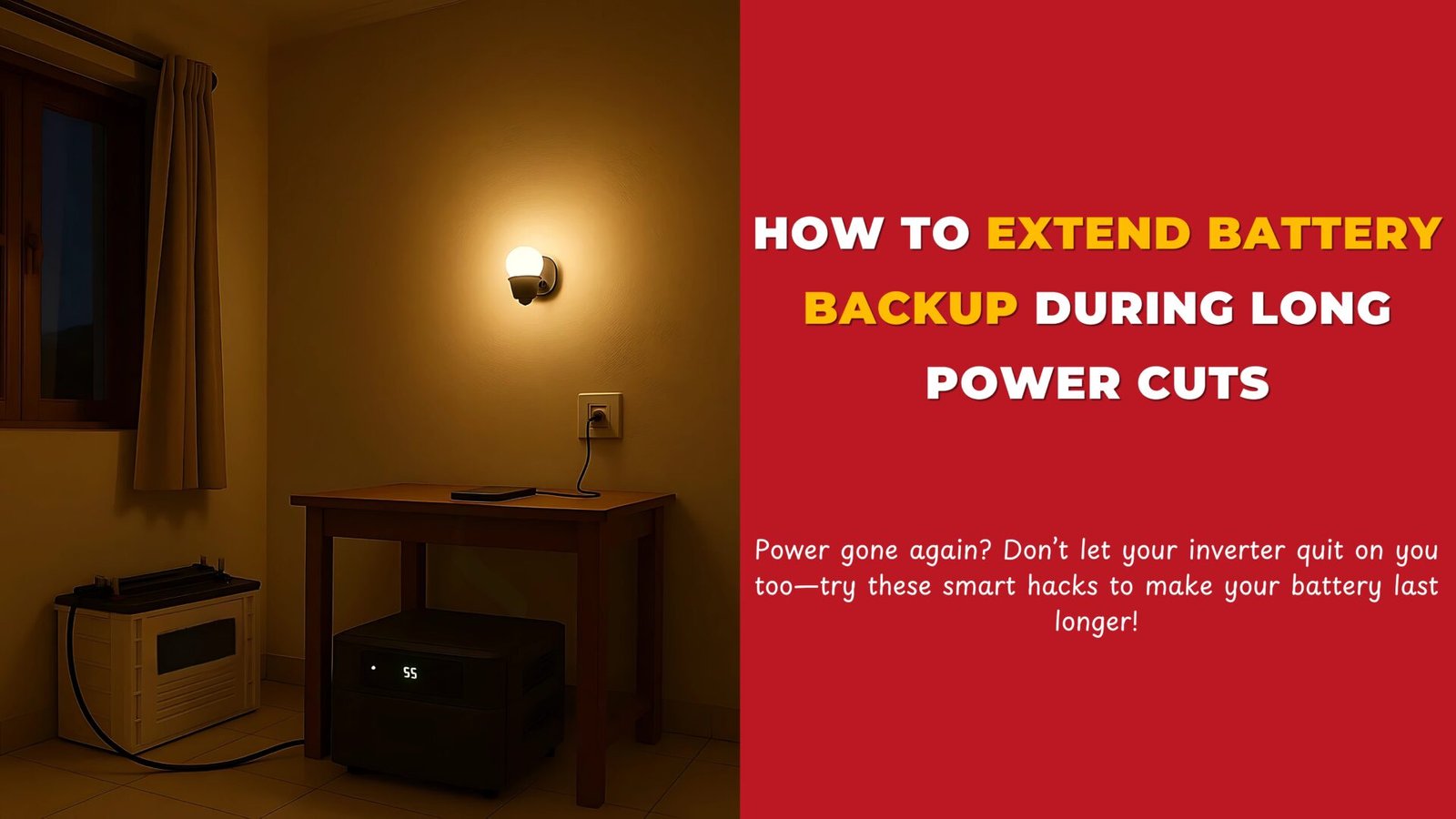Frequent and prolonged power cuts are a reality for many homes and businesses in Udaipur and across India. But limited inverter battery backup can make these outages stressful, cutting off essential lights, fans, or devices just when you need them most. That’s why knowing how to extend battery backup and maximize inverter performance isn’t just helpful—it’s a necessity for daily comfort and productivity.
Understand How Battery Backup Works
An inverter’s primary role is to convert stored DC power from its battery into usable AC electricity for your appliances when the main power goes out. The backup time depends on:
- Battery capacity (measured in Ah)
- Current load (total wattage of running devices)
- Health and age of your battery
- Efficiency of the inverter system
If you use more appliances or high-powered devices, your battery life during power cuts will be shorter. Likewise, an old or poorly maintained battery will lose capacity faster. Smart, informed steps are your best tool for a longer-lasting power supply.
Top 6 Proven Tips to Extend Battery Backup
Here are six actionable ways to increase inverter battery backup and keep your essential appliances powered for longer during outages. Each tip focuses on easy, realistic adjustments that non-technical users can adopt instantly.
1. Turn Off High-Power Appliances
The biggest drain on your inverter is running heavy appliances like irons, mixers, microwaves, and even refrigerators. As soon as the power goes out, switch off all non-essential or high-wattage appliances. Prioritize fans, lights, and charging basic devices. The lighter your load, the longer your battery backup.
2. Use LED Lights Instead of CFL/Incandescent
LED bulbs consume far less power than traditional CFLs or incandescent bulbs, making them perfect for backup scenarios. Replacing old bulbs throughout your home can extend battery backup significantly. For example, a 7W LED can replace a 60W incandescent with the same brightness—giving you more hours of light per charge.
3. Maintain Proper Battery Water Levels
For lead-acid inverter batteries, low electrolyte (water) levels can dramatically reduce both lifespan and backup time. Check battery water every 1–2 months and top up with distilled water as needed. Never use tap water, as minerals can harm the battery. Well-maintained water levels mean more efficient charging and longer battery life during power cuts.
4. Install Battery in a Ventilated Area
Heat is the enemy of battery health. Batteries placed in hot, enclosed spaces degrade faster and can’t deliver full backup. Always install your inverter battery in a cool, well-ventilated spot away from direct sunlight and heat sources. Proper airflow also prevents gas buildup and corrosion, resulting in better performance and longer life.
5. Charge Fully Before Heavy Usage
If you expect a long power cut (like during the rainy season or planned outages), make sure your battery is fully charged beforehand. Avoid using the inverter for non-critical appliances that deplete the battery before you really need it. A well-charged battery provides the best backup when demand peaks.
6. Use Power Saving Modes (if available)
Some modern inverters come with built-in power-saving modes or “Eco” settings. These modes automatically optimize output and prioritize lower energy usage, helping to maximize inverter performance and stretch available backup time. Refer to your inverter’s manual or consult your technician to activate and use these features efficiently.
Inverter Maintenance Tips for Long-Term Backup Health
Consistent maintenance is the backbone of a reliable backup system. Here’s how you can enhance longevity and dependability:
- Keep terminals clean: Dust, moisture, and corrosion at terminals can reduce power transfer. Wipe them with a dry cloth; use petroleum jelly to prevent rust.
- Check for loose/damaged wires: Regularly inspect for frayed cables, loose connections, or wiring damage, and replace or tighten as needed.
- Ensure dust-free installation: Keep the battery and inverter space clean to minimize short circuits and keep airflow unblocked.
- Schedule regular service: Get a professional technician to inspect battery health, specific gravity, and overall inverter function at least every 6–12 months. Replace batteries that show swelling, leaks, or dropping backup hours—old batteries reduce the effectiveness of all your inverter maintenance tips.
Conclusion
Smart, mindful use of your inverter—and periodic maintenance—can genuinely extend battery backup during even the toughest power cuts. Adopting these practical habits makes every bit of stored energy go further, ensuring light, cooling, and safety when you need them most. Remember, small changes—like switching to LEDs, or simply unplugging the TV—can add precious hours to your backup.
If you’re looking to improve your battery backup or explore better inverter/battery options based on your power needs, feel free to reach out.
We’ll help you find the right solution—tailored to your needs, with clarity and care.
🔋 Visit Vaibhav Enterprises – Your Trusted Battery Expert in Udaipur
From expert guidance to dependable inverter and battery solutions, we help keep your home and workspace powered through every outage.
📍 Shop No. 4, Ground Floor, Kanhaiya Enclave, Opp. Ayad Museum, Near Titanium Plaza, Udaipur, Rajasthan – 313001
📞 Need help choosing the right backup? Contact us today for honest advice and quick support!

